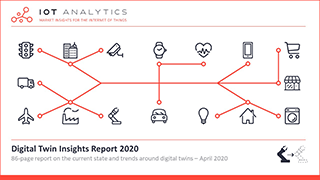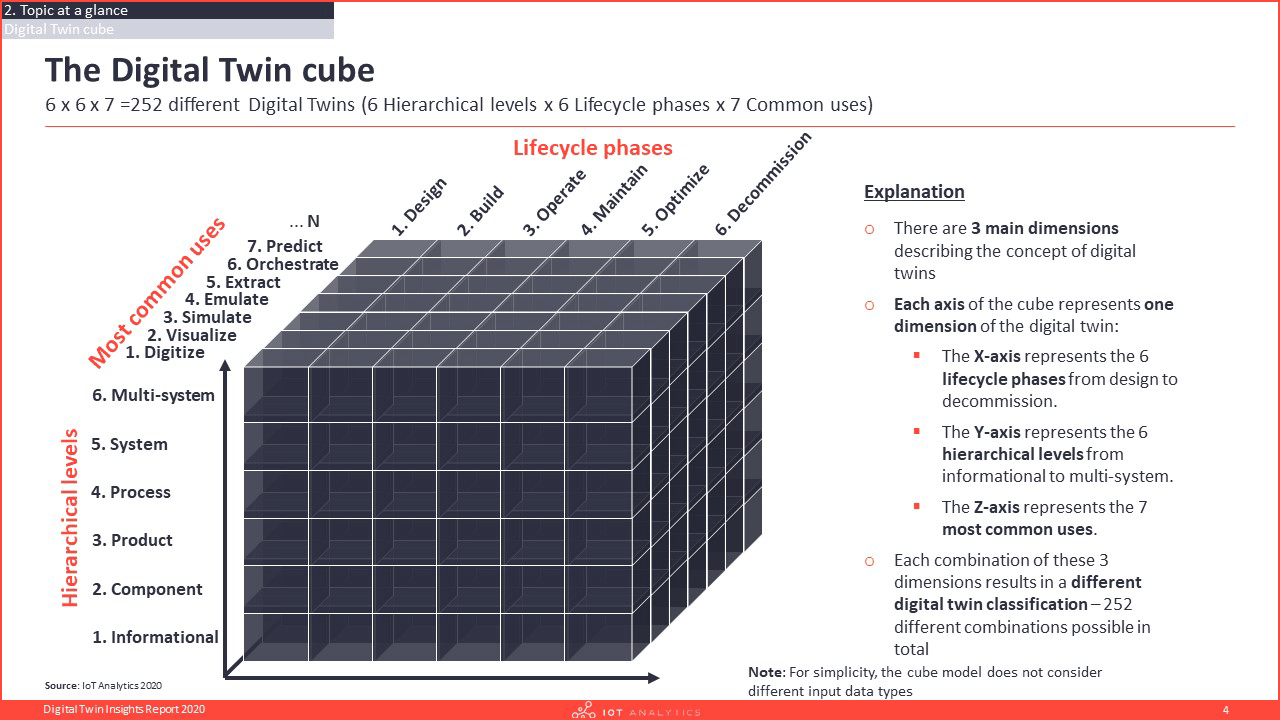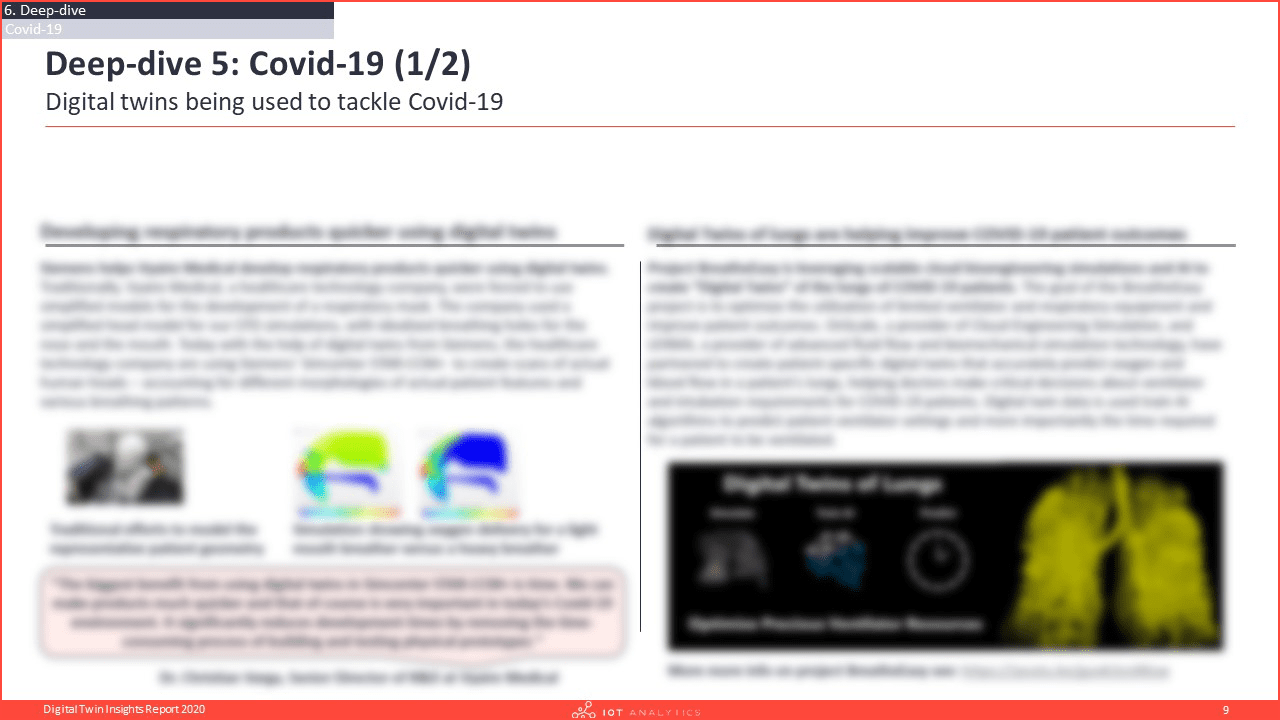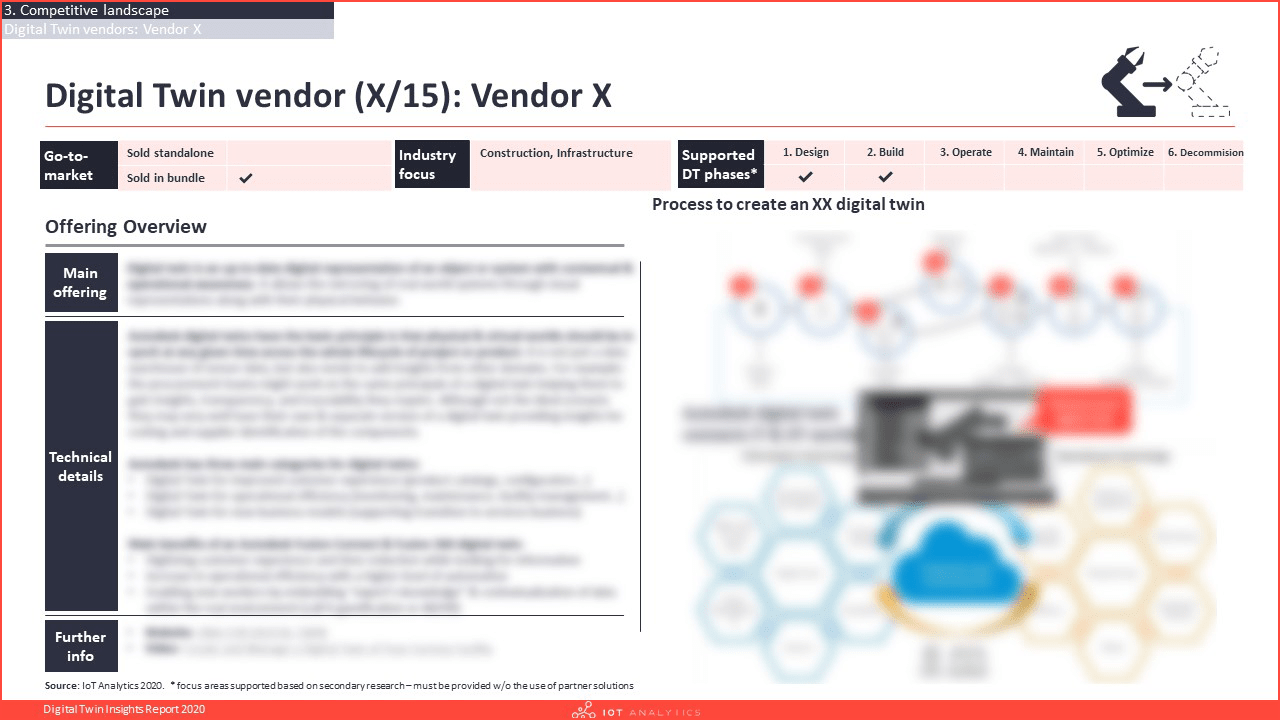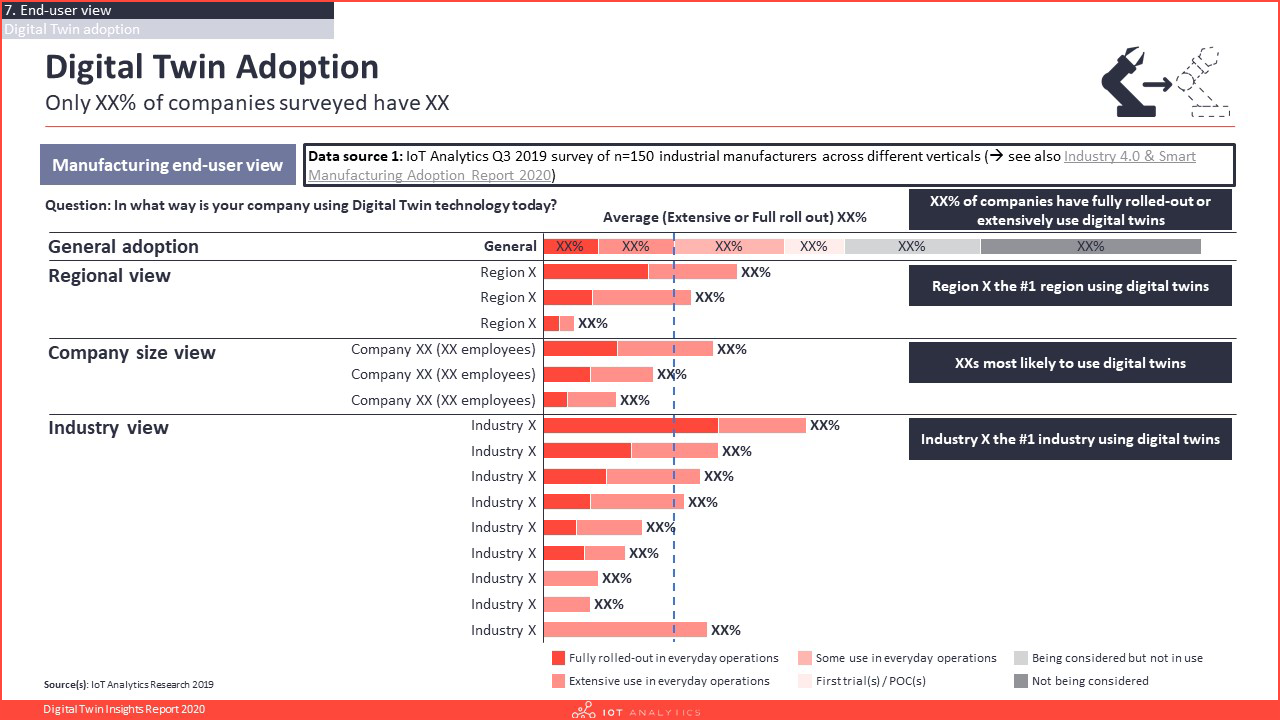Description
Digital Twin Insights Report 2020
The Digital Twin Insights Report 2020 is part of IoT Analytics’ ongoing coverage of the IoT Platforms/Software Research Workstream.
The main purpose of this report is to help our readers understand the current Digital Twin landscape by defining and analyzing the market.
Read the corresponding blog post here.
Find out:
- What is a Digital Twin (definition)?
- Who are the key players offering Digital Twin technology and what is their offering?
- What are examples of successful Digital Twin implementations?
- What are the main trends shaping the Digital Twin market?
- What are the key challenges associated with building digital twins?
- What standardization efforts exist for digital twins?
- How are Digital Twins being used to tackle Covid-19?
- What is the end-user view of Digital Twins in terms of adoption, ROI, budgeting, and use with IoT platforms?
Available pricing plans:
See Terms & Conditions for license details.
Single User License
Market Report Single User License- 1 Named user (in your organization within the country of purchase)
- Complete market report in PDF
- Database of 90+ Digital Twin companies
- Database of 35 Digital Twin projects
- Complete market report in PPT
- 1h Discussion with the analyst team
Team User License
Market Report Team User License- 1-5 Named users (in your organization within the country of purchase)
- Complete market report in PDF
- Database of 90+ Digital Twin companies
- Database of 35 Digital Twin projects
- Complete market report in PPT
- 1h Discussion with the analyst team
Enterprise Premium License
Market Report Enterprise Premium User License- Unlimited users (in your organization within the country of purchase)
- Complete market report in PDF
- Database of 90+ Digital Twin companies
- Database of 35 Digital Twin projects
- Complete market report in PPT
- 1h Discussion with the analyst team
At a glance:
A digital twin is a digital abstraction or representation of a physical system’s attributes and/or behavior on 3 distinct dimensions.
This report includes a detailed definition of digital twins, key vendors, case study analysis, key trends & challenges, and insights from relevant surveys.
A cube analysis is used to frame the various digital twin offerings in the market. The 3 dimensions include 1.Hierarchical levels, 2. Lifecycle phases, 3. Most common uses and input data types, and results in over 250 Digital Twin classifications.
The report includes 10 detailed case studies and a database of 35 digital twin case studies that have been identified across variety of industries and analyzed for this research.
Results of an (manufacturing focused) end-user survey are presented showing digital twin adoption rates, ROI, and budgets analysis.
Selected companies from the report:
ABB, Ansys, Autodesk, AWS, Bosch, Dassault Systemes, Emerson, ESRI, General Electric, IBM, Microsoft, Oracle, PTC, SAP, Schneider Electric, Seebo, Siemens, Twaice, Willow, among 70+ others.
Request Sample:
Request a sample of the report:


